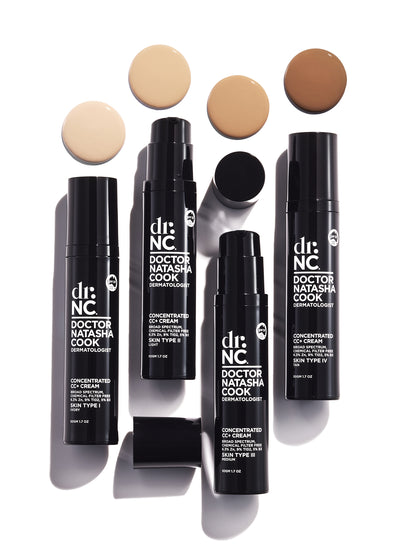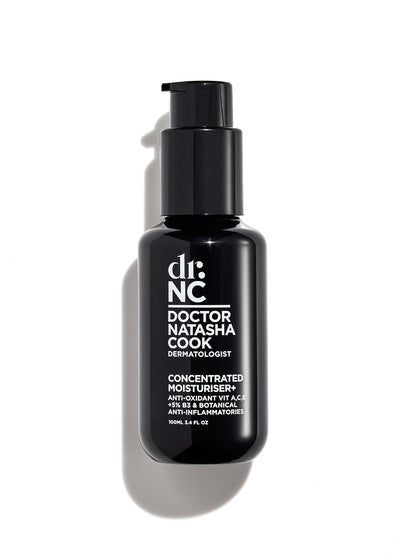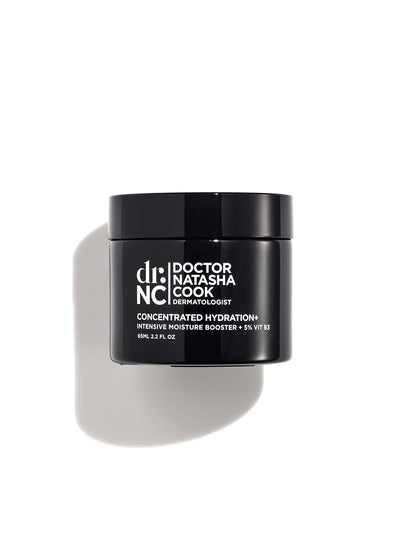
This article was originally published on SPA+CLINIC.
SPA+CLINIC catches up with leading Dermatologist Dr Natasha Cook on how to future proof your skin and the impact of the skin ageing exposome.
Time to reverse the biological clock...
From the moment we’re born, we begin to age. Every minute we’re alive, we’re ageing and damaging our skin. Until recently, it was thought that there was little we could do to prevent the ageing process – but with further study, it turns out that’s not true.
We now know 80% of how we age is largely under our control determined by lifestyle factors and only 20% is determined by our inherited coded DNA. This is a fact known as epigenetics, and the impact of the skin ageing exposome! By influencing the “epi” genome we can switch on and off different parts of our coded DNA and therefore influence cellular ageing.
As a result, many of our preconceived ideas around ageing will potentially become obsolete. The transitions between decades become more blurred as we get more control over ageing and age seamlessly from one decade to the next.
So, what are the lifestyle factors that can impact on how our cells age and function? A phenomenon known as the Skin Ageing Exposome.
This concept has been a big focus at recent international conferences I’ve attended. Science uncovers new insights into how the environment and our lifestyle affects how our skin ages (1).
“Your ageing clock ticks over every day. Science says the earlier you change your lifestyle to slow ageing, the healthier and more vibrant you will be and will remain. Why wait?” Harvard Professor, Dr David Sinclair.
A group of European scientists looked at the major studies that contributed to cell ageing and came up with this list of seven (7) lifestyles factors:
1. Nutrition
What and how we eat is crucial in preserving cellular age and function. In the immortal words of Hippocrates: “Let food be thy medicine and medicine be thy food”.
The optimal diet is easily summarised in the one consumed by Okinawa women meets Sardinians (Mediterranean). Minimal processed foods, good fats (olive oil, fatty fish, avocado), powerful anti-oxidants (tomatoes, capsicum, green vegetables and dark coloured berries). Minimise fruit (as it is sugar) and minimise meat, replacing with protein from fish, eggs and legumes.
Low sugar is essential. Sugar damages tissue via a process known as glycation (4).
It binds to proteins such as collagen and elastin, eventually leading to a loss of function and impaired tissue elasticity.
Not just what to eat but WHEN! The power of time restricted eating (TRE). This refers to fasting for 16 hours and eating in an 8-hour window. Skipping breakfast is the simplest way to do this. TRE mimics the benefits of calorie restriction WITHOUT cutting out the calories. TRE switches on the anti-ageing pathways in the cell increasing function and cellular longevity.
2. Lack of sleep
Get your eight hours!
In skin, restricted sleep has been shown to affect the facial appearance. A cross-sectional study of 60 women found those who slept less than five hours per night showed more intrinsic signs of ageing.
One study found that people with less sleep appeared less healthy, less attractive with paler skin and, more wrinkles and fine lines (1). Lack of sleep also increases your risk of hypertension, cardiovascular disease and depression.
Trying to create a regular sleep pattern, avoid day naps and winding down and relaxing before bed are great ways to get into a good routine.
3. Pollution
Air pollution from the environment causes premature ageing – it’s known as pollu-ageing. It can cause similar damage to the skin as UV! Exhaust fumes, smog, smoke and even pollen can introduce free radicals that attach themselves to our healthy skin cells – damaging the protective barrier and degrading collagen.
Topical products with antioxidants can improve the skin barrier function and prevent pollution entering our skin. Niacinamide (Vitamin B3) is one of the best barrier strengthening ingredients to protect your skin from environmental pollution. It will double up as an anti-oxidant and anti-inflammatory.
4. Sun Radiation
The number one culprit that will damage you and your skin. Sunlight has two types of damaging rays: UVB + UVA. UVB hits the outer layers of the skin and creates dimers in your DNA increasing risk of skin cancer. UVA penetrates deeper, creating more age-related damage (eating up your collagen and elastin) along with skin cancer.
So early sun avoidance and daily SPF every single day is essential with a broad spectrum product that covers both UVA and UVB.
5. Stress
Clinical evidence shows that stress affects skin integrity, but further studies are being done to work out whether stress directly exacerbates skin-ageing. We do know that prolonged stress can contribute to DNA damage which is a known contributor to skin ageing (1). We also know that stress can create DNA damage which we can reverse. Some mindful daily meditation will help keep this under control.
6. Temperature
Did you know heat (i.e. infra-red radiation) is EQUALLY as damaging as UV. Frequent heat exposure causes inflammation and DNA damage known as ‘thermal ageing’. Our normal skin temperature is roughly 33 degrees celsius and during direct sun exposure can increase to more than 40 degrees. Keeping cool is essential. So that’s a NO to infrared saunas! Heat also creates pigmentation in your skin.
7. Tobacco
Cigarette smoke alters biological processes in the skin, promoting skin ageing. ‘Smoker’s skin’ is characterised by prominent facial wrinkling around the mouth, upper lip and eyes. Smoking alters skin hue and radiance and smoke creates similar cellular damage as UV exposure. One inhalation from a cigarette contains more than 3,800 different chemicals. These chemicals absorb into the skin creating damage. Please quit if you haven’t already!
So, that’s a super summary of the key skin ageing Exposomes and how these lifestyle factors can determine how you and your skin function and age through the decades. I’m a firm believer that early intervention is prevention!
References: (1) JDS Dermatological Science Journal (2) National Library of Medicine (3) Lifespan Podcast by Dr David Sinclair (4) Pascal and Francis Bibliographic Databases (5) Clinical Dermatology Online Library











